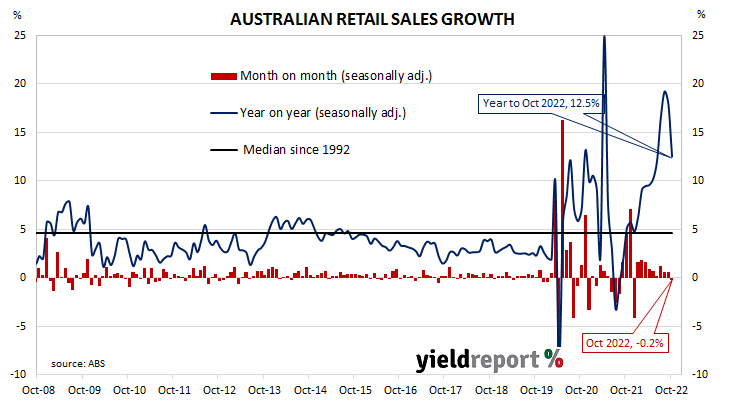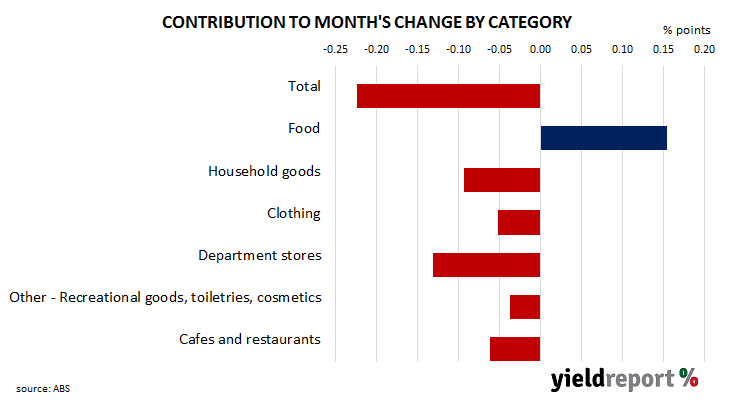Summary: Retail sales down 0.2% in October, below expectations; first monthly fall in 2022; “a broad-based weakening”, coming off high base; largest influence on month from food sales.
Growth figures of domestic retail sales spent most of the 2010s at levels below the post-1992 average. While economic conditions had been generally favourable, wage growth and inflation rates were low. Expenditures on goods then jumped in the early stages of 2020 as government restrictions severely altered households’ spending habits. Households mostly reverted to their usual patterns as restrictions eased in the latter part of 2020 and throughout 2021, although not for all categories.
According to the latest ABS figures, total retail sales decreased by 0.2% in October on a seasonally adjusted basis. The fall was in contrast with the 0.5% increase which had been generally expected as well as September’s 0.6% rise. Sales increased by 12.5% on an annual basis, down from September’s comparable figure of 17.9%.
“This is the first time retail sales have fallen this year and could add fuel to discussions about a possible RBA pause in December,” said ANZ economist Madeline Dunk.
Commonwealth Government bond yields moved lower on the day with the exception of ultra-long yields. By the close of business, the 3-year ACGB yield had shed 3.21%, the 10-year yield had lost 6bps to 3.52% while the 20-year yield finished 4bps higher at 4.00%.
Westpac senior economist Matthew Hassan described the month’s figures as indicative of “a broad-based weakening.” However he also acknowledged sales were “coming from a very high starting point” given the 12.5% rise over a twelve-month period.
Retail sales are typically segmented into six categories (see below), with the “food” segment accounting for nearly 40% of total sales. This segment was the largest influence on the total during the month as food sales increased by 0.4% on average over the month and contributed 0.15 percentage points to the net result.



